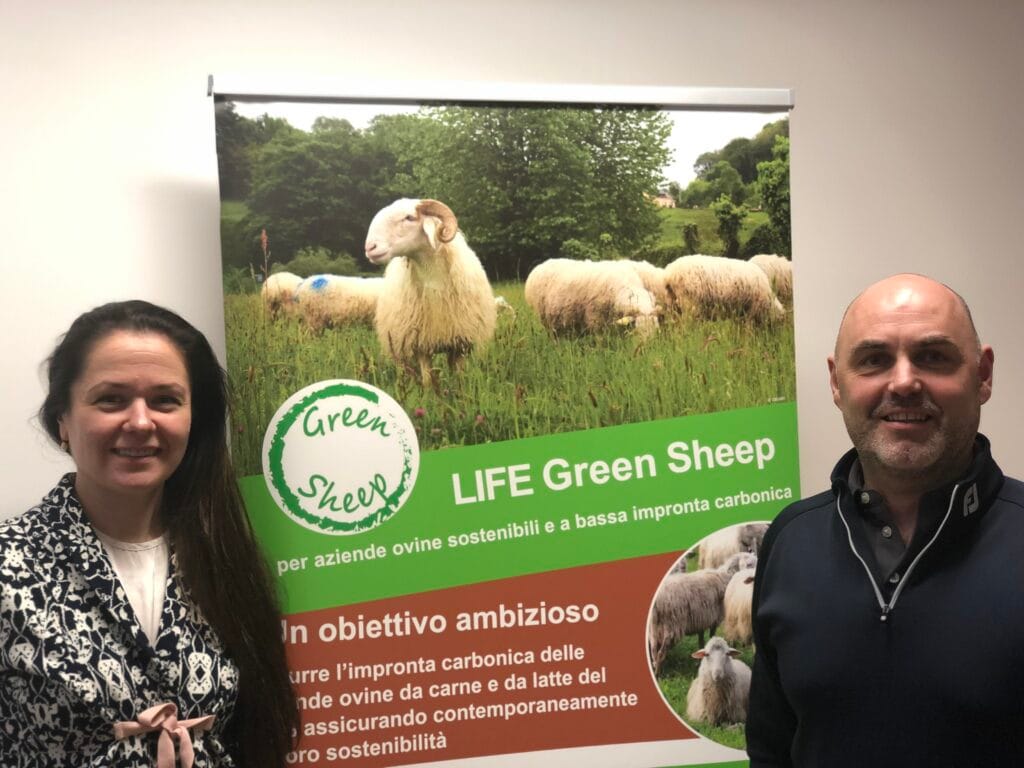In Ireland, the LIFE Green Sheep program is led by Teagasc (the Agriculture and Food Development Authority) which is the national body providing integrated research, advisory and training services to the agriculture, the food industry and rural communities. The Teagasc team working on the LIFE Green Sheep program include Dr Tim Keady, Dr Cathal Buckley, Dr Lyubov Bragina and Dr Kevin Hanrahan. Dr Lyubov Bragina, who has a PhD in Environmental Science, is employed as a Research Data Technologist on the LIFE Green Sheep project. Lyubov is responsible for the day to day operations of the project, including farm data analysis using Irish Sheep LCA model and estimation of the carbon footprint of sheep meat production.
What brings Life Green Sheep Program to your organisation?
Agriculture is the largest contributor to Irish greenhouse gas emissions by sector accounting for 37.5% of the economy wide national emissions total in 2020. The Government of Ireland enacted a Climate Action and Low Carbon Development Act in 2021 which sets out ambition targets of a 25% reduction from the agricultural sector by 2030. It is hoped that the Life Green Sheep project can provide a pathway for Irish sheep farmers to reduce their emissions.
What is your ideal vision for the Irish sheep sector in 10 years time ?
Irish sheep production systems play an important role in producing high-quality food for a growing global population, from a land resource which is generally unsuited to alternative agricultural food-producing enterprises. The maintenance of current hill and mountain landscapes is viewed as important from an environmental and sustainability perspective, as well as rural community and tourism perspectives. Hill and mountain sheep farming systems operating at appropriate stocking rates and grazing the hill for up to 10 months annually contribute significantly to maintaining high-quality habitats and rich species biodiversity.
The overall vision for the lowland sheep sector is a grass based system of prime lamb production that produces meat which meets consumer requirements cost effectively. The vision for the hill sector is that it will be primarily supported for its role in maintaining the hill and mountain environment, in addition to producing store lambs either for finishing between November and April or as quality prolific replacements for lowland flocks.
Where is the main technical lever according to you to improve the environmental performance of Irish sheep farming?
Improving flock productivity by having healthy animals, adopting diets producing less GHG emissions, improving manure management on farms and optimising the use of chemical nitrogen, use of renewal energy sources on farm, implementing practices that promote carbon sequestration such as planting hedgerows.
Photo: Dr Lyubov Bragina and Dr Cathal Buckley


